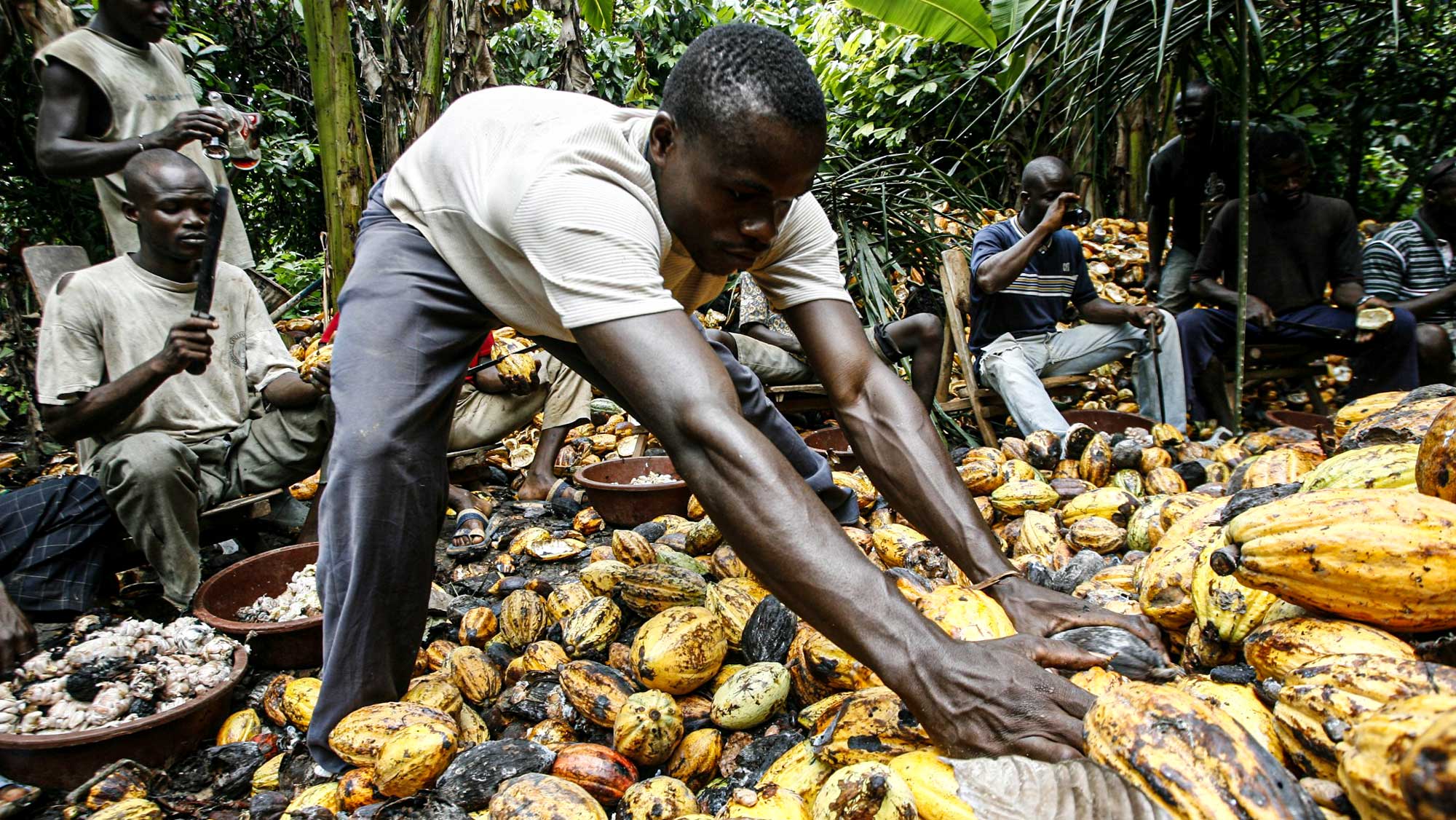Innovation and Learning / Forced Labour Risk
Learning to tackle forced labour risk in cocoa
Forced labour is a serious problem that needs to be better understood and addressed in global supply chains, including cocoa. A 2018 study by the Walk Free Foundation estimated that between 2013 and 2017 approximately 15,000 children and 13,000 adults in the cocoa sectors of Côte d’Ivoire and Ghana had worked in conditions of forced labour.
However, it is also important to distinguish between forced labour and those forms of child labour that are most prevalent in the sector and mainly involve children working on the family farm. Forced child labour represents less than 1% of the total number of children working in the cocoa sector. It is also mainly confined to specific contexts or vulnerable groups such as migrant workers, according to independent researchers.
While less prevalent than child labour, the risk of forced labour must be acknowledged and tackled to safeguard the rights and well-being of affected children and adults. Doing so poses significant challenges as forced labour mostly occurs out of sight. But by taking the right approach, these challenges are not insurmountable.
Recognising the need to address the risk of forced labour in cocoa, ICI has launched a project in ten communities in Côte d’Ivoire and Ghana. The project is developing practical ways to better understand forced labour risks in order to detect, mitigate and respond to them.
The project has identified a series of forced labour indicators that are grouped around two main elements: work undertaken involuntarily, or work carried out with some threat of penalty. Based on these indicators, detection, prevention and needs-based remediation options are being developed and tested. These include the use of a monitoring tool, clarifying work compensation, and providing tailored assistance to at-risk workers or victims of abuse.
During the project, we have so far learned the importance of conducting individual interviews, rather than group discussions, with community members and farmers when investigating forced labour issues. Different responses were gathered when community members were asked questions one-to-one, giving a clearer picture of actual forced labour risks and causes. They indicate that the traditional view of forced labour is much more complex and not always applicable. Often, social, cultural and economic factors combine to bind employees to employers through a subtle web of dependencies.
The project has also shown the importance of more formal contracting arrangements, whether oral or written, and found there is a desire for them among farmers and workers in Côte d’Ivoire. In the absence of such contracts, workers are more exposed to exploitation. Efforts are being made to standardise written and orally witnessed contracts, while testing is underway to gauge their effectiveness in reducing forced labour risk.
The project is ongoing, and the derived learnings and outputs (including training and awareness-raising materials) will be shared and applied actively within those communities in Ghana and Côte d’Ivoire where the risk of forced labour is pronounced.
